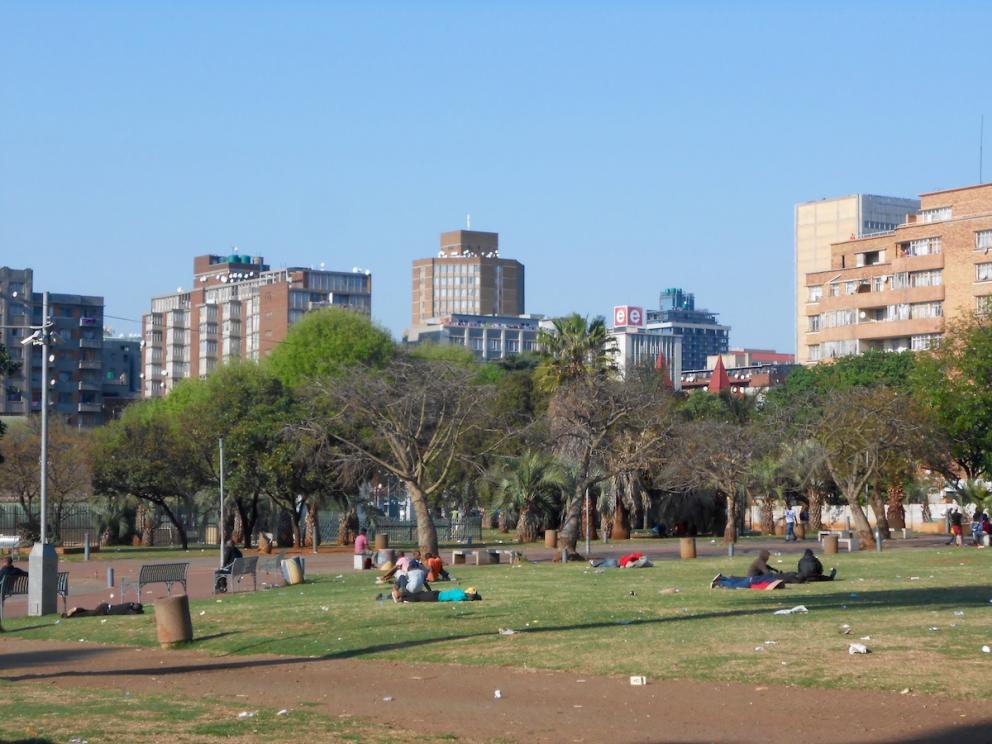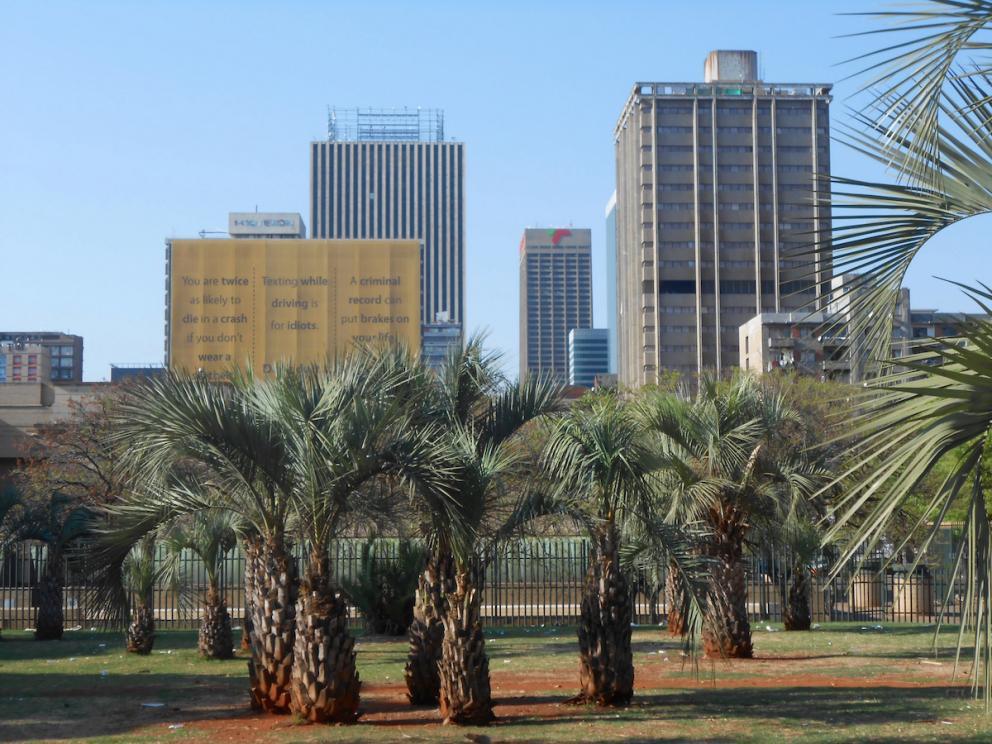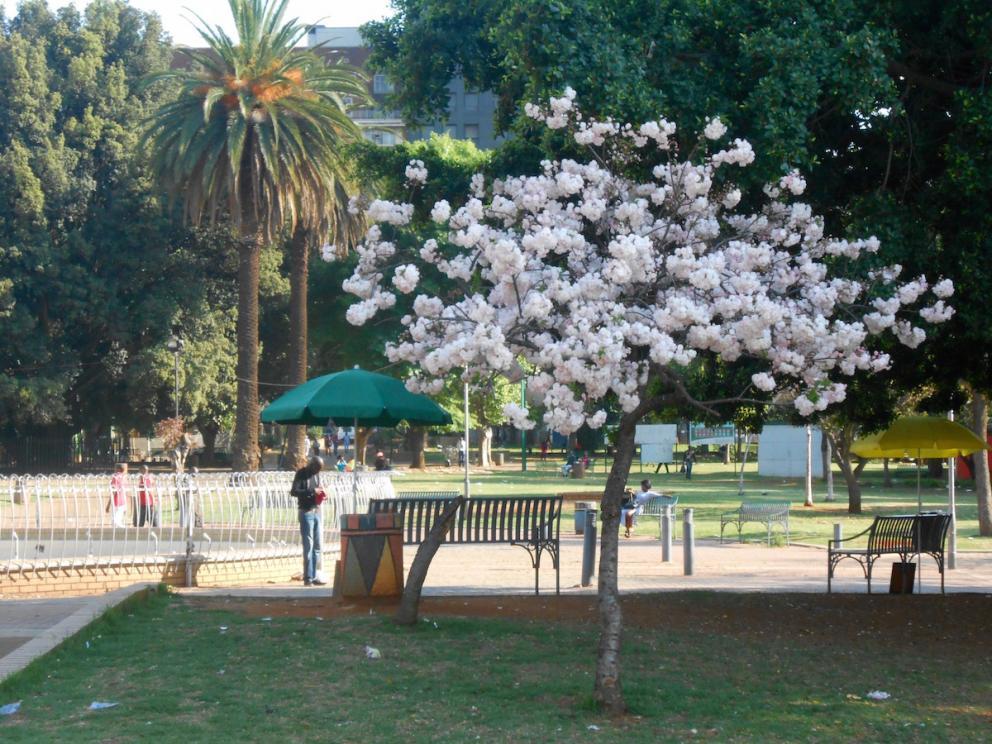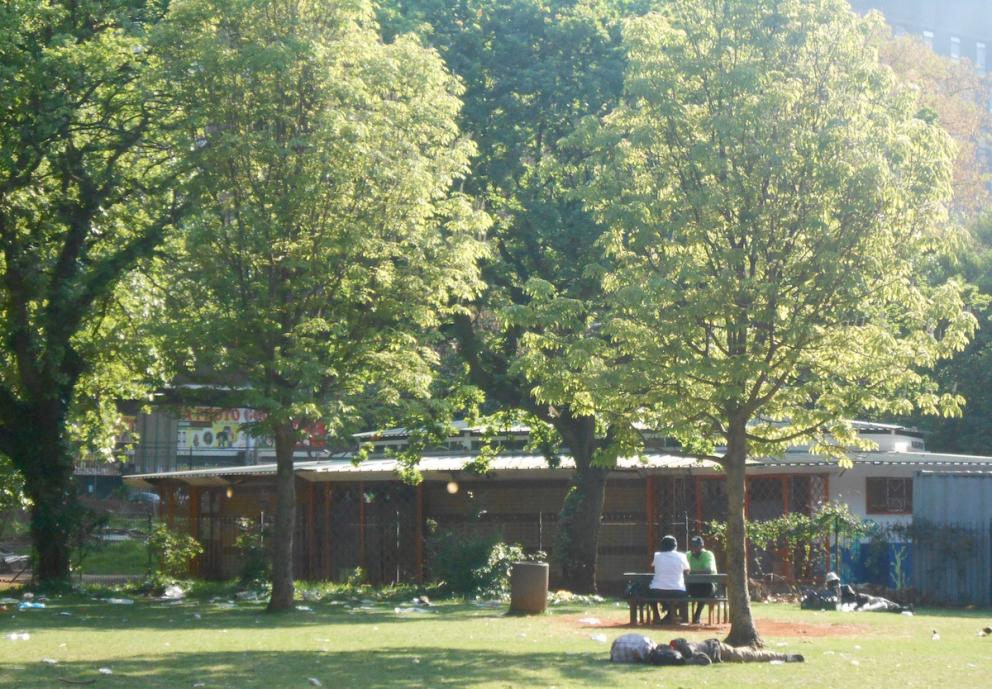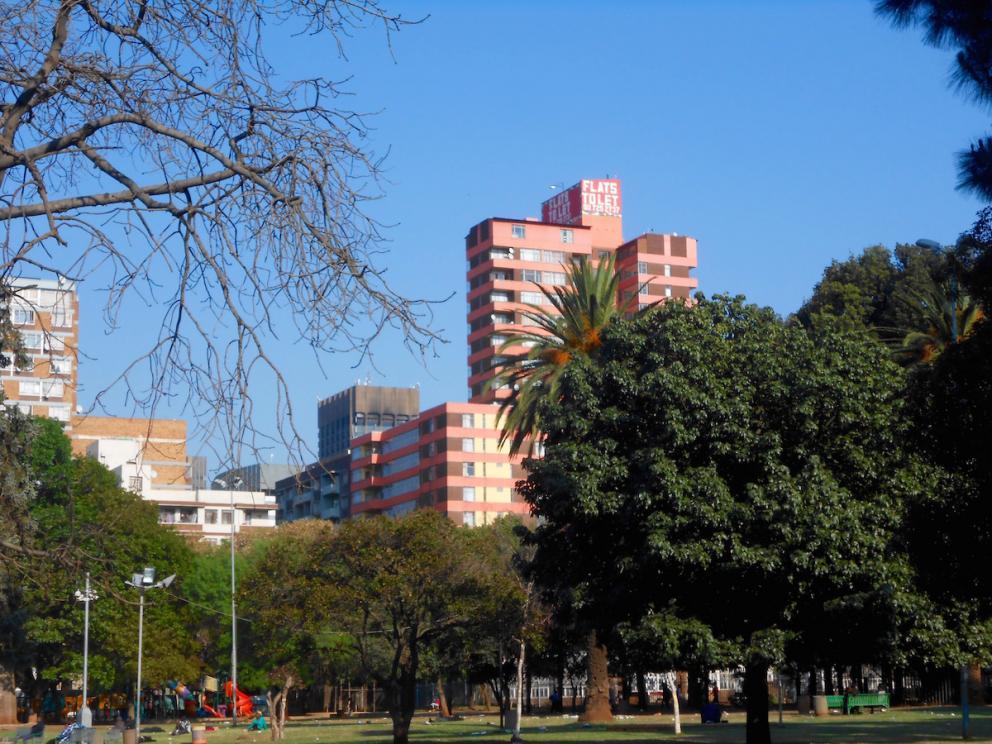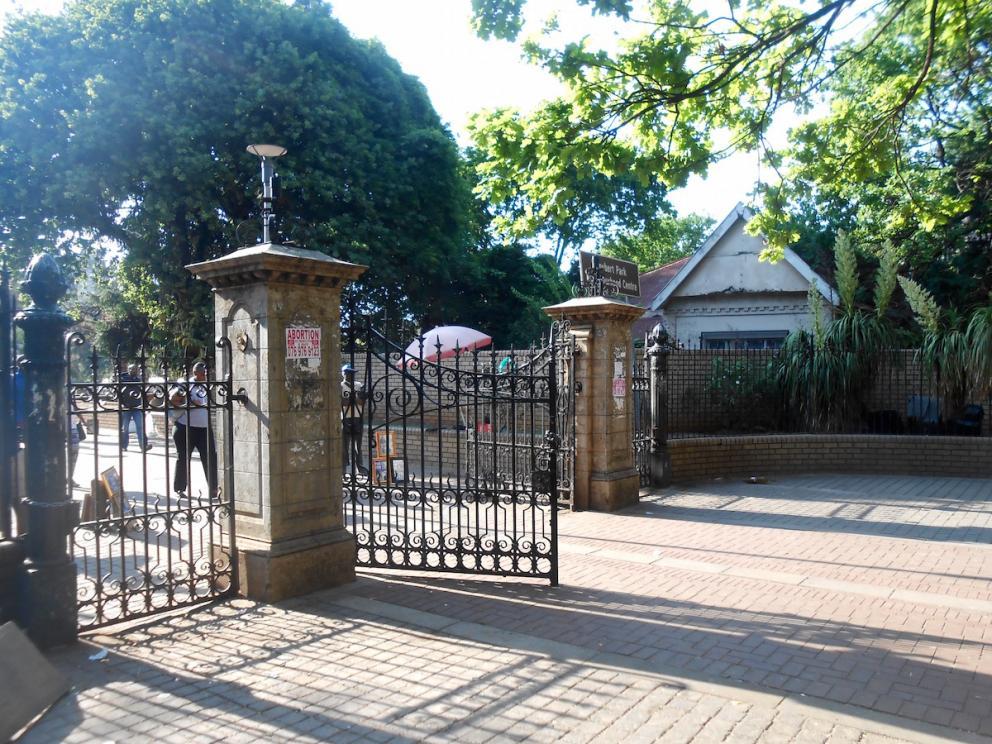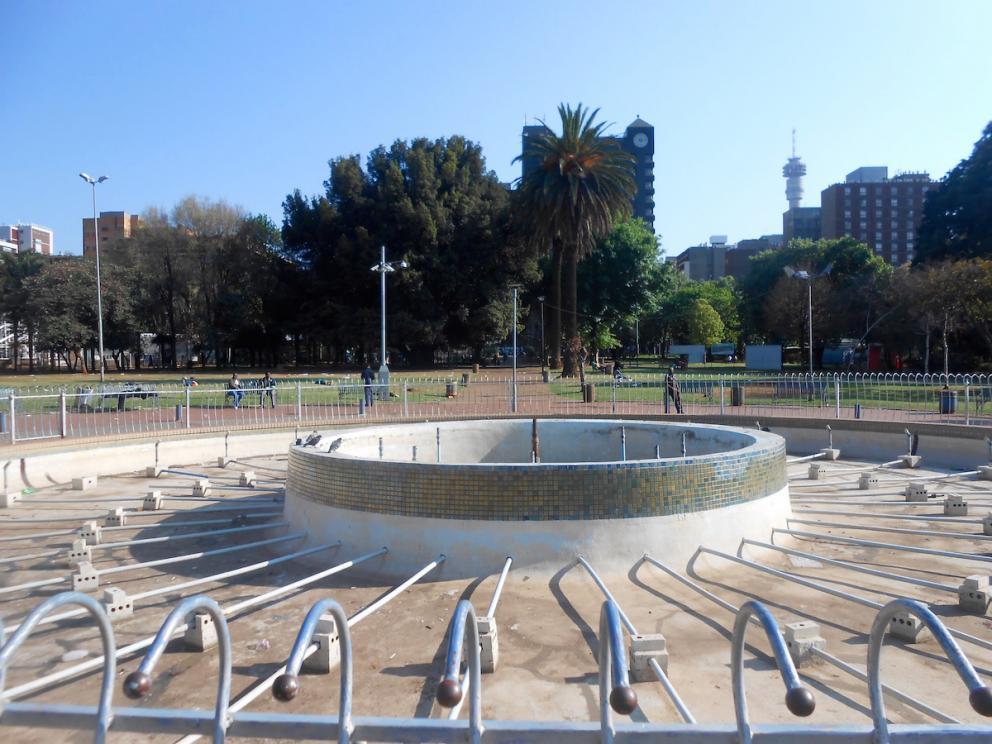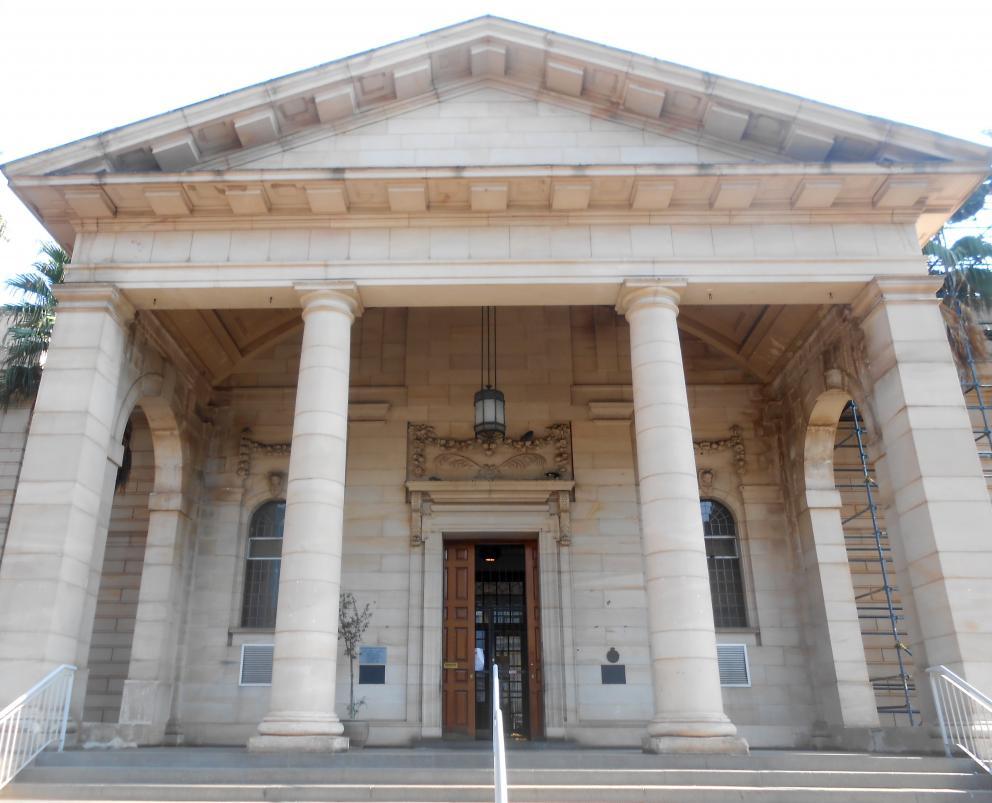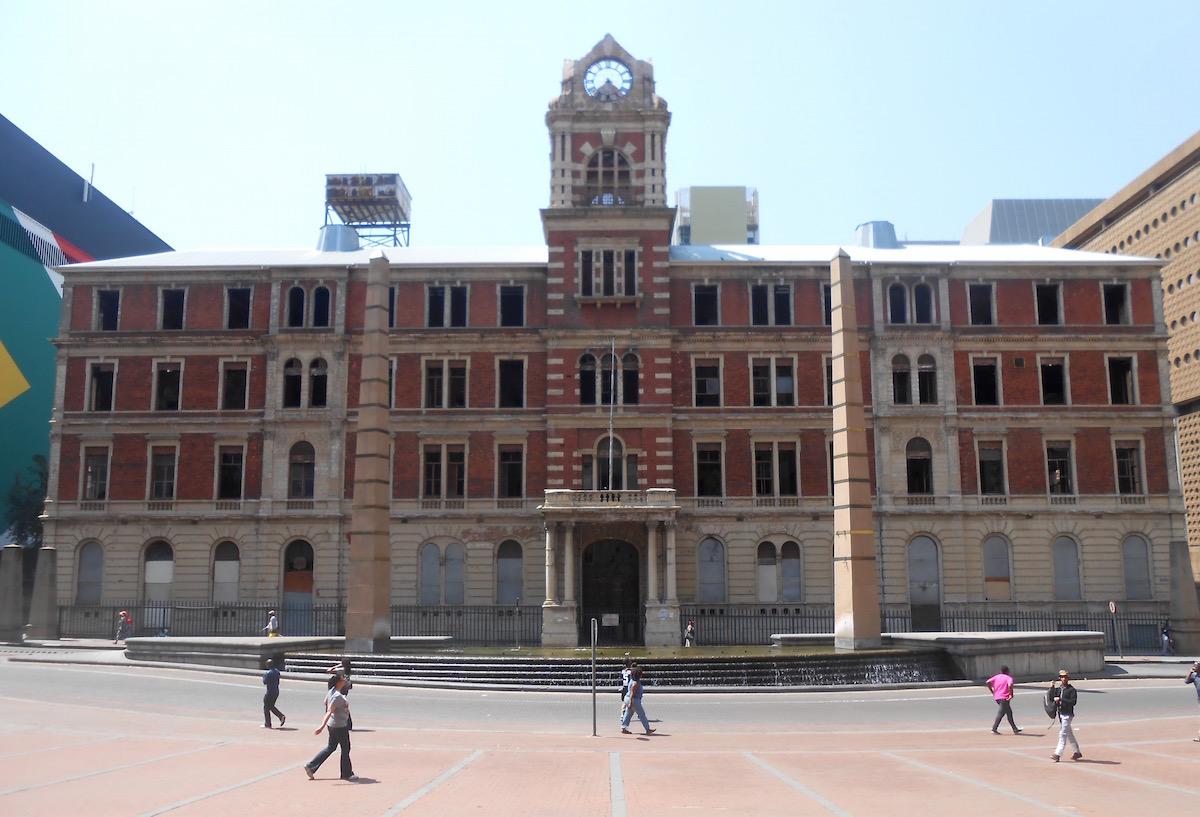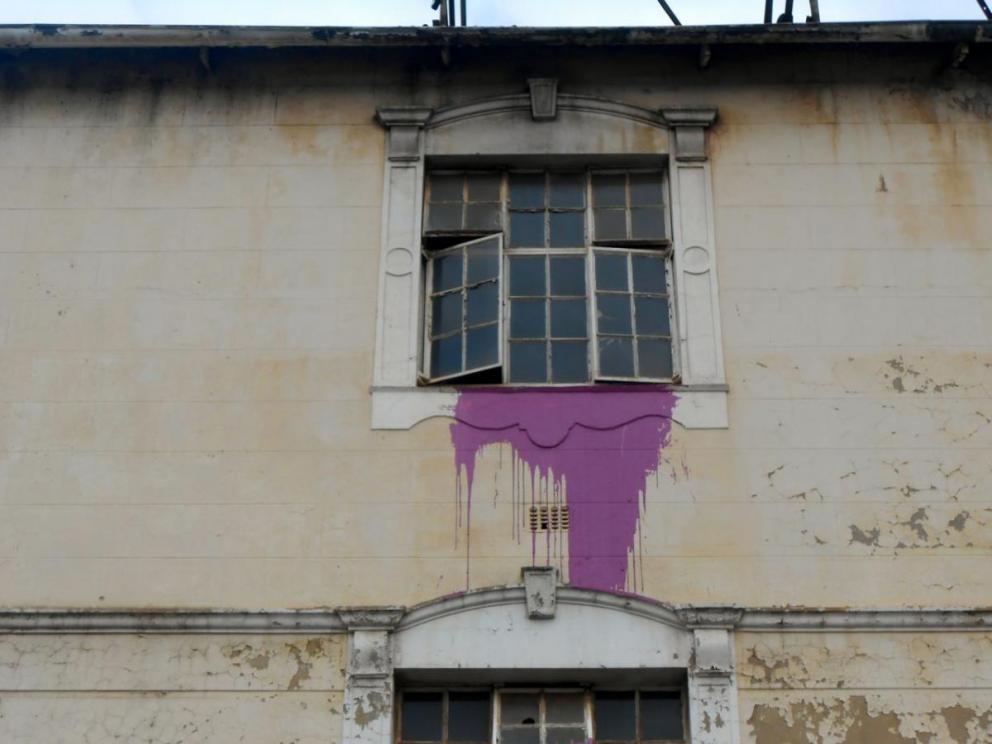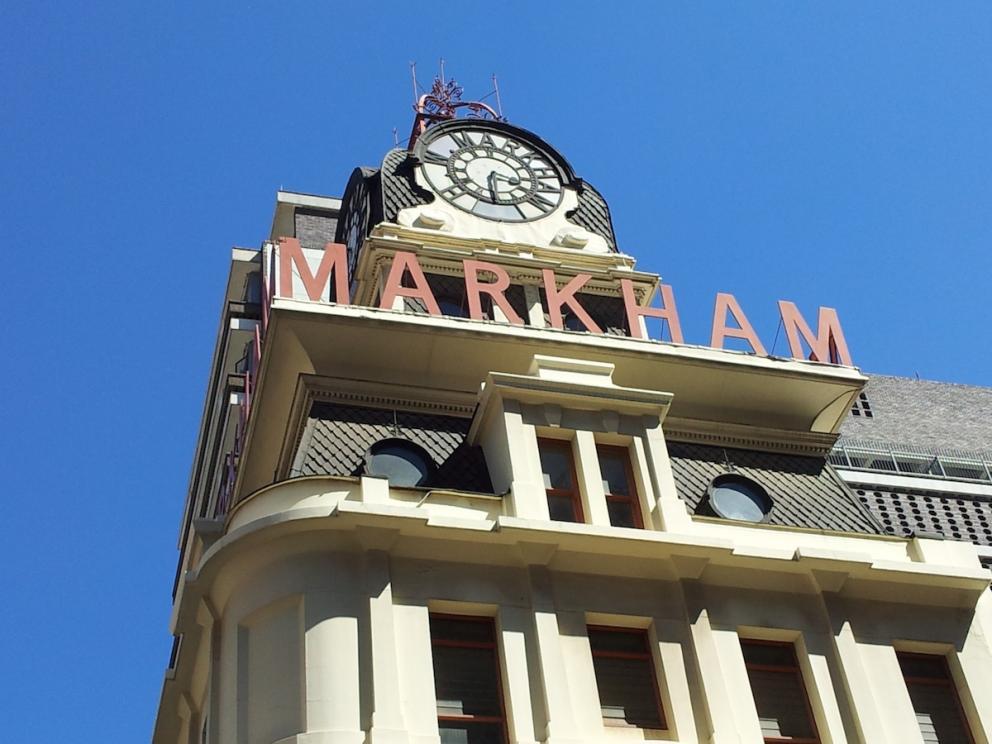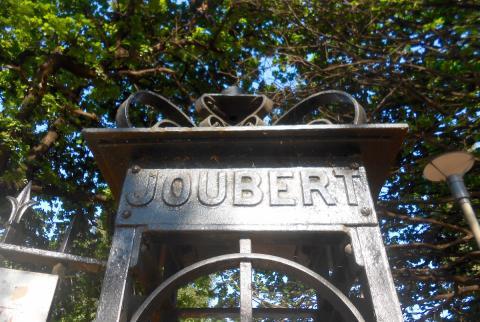
Disclaimer: Any views expressed by individuals and organisations are their own and do not in any way represent the views of The Heritage Portal. If you find any mistakes or historical inaccuracies, please contact the editor.
It is claimed that the upgrading of the Jack Mincer Taxi facility will take 18 to 20 months to complete and that public safety issues (amongst other reasons) preclude the structure being used during building operations. Therefore it is suggested that as a temporary measure the taxis may be relocated to Joubert Park. This, on the face of it, would seem to be a realistic proposal, particularly in the light of the other reasons that the Johannesburg Development Agency (JDA) advances for this strategy. Therefore to protest against the proposal, as some have done, seems to be unreasonable, but such a conclusion would not be correct for the following reasons.
Apart from the fact that parks are indispensable recreational facilities in crowded, built up areas, they are also synonymous with heritage, not only for their social significance, but also because they reveal layers of the history of the park and the values of those responsible for their conception and maintenance. In the case of Joubert Park it is a sad story of neglect, lack of caring and worse still, disdain for the people who depend on parks for out-of-door recreation.
Joubert Park - An indispensable facility in a built up area
Joubert Park - An oasis in the City
Historically, Joubert Park was laid out as a typical Victorian park. It was then, as now a retreat for the residents in the surrounding area, but it has been altered from time to time. These alterations damaged its historic significance and have not improved its aesthetic qualities, but it remains a valuable social amenity in one of the most densely inhabited areas of Johannesburg.
The City of Johannesburg has sullied its reputation by its lack of commitment to protecting City parks.
Even before 1994 successive local governments started to erode the boundaries of Joubert Park for road improvements. It seems that local government, then and now, have prioritised motor vehicles over people. This perception adds to the concern I have that once alienated for the use of a taxi holding area, a valuable heritage resource and social amenity will be lost forever.
Joubert Park - A valuable social and heritage resource
I have read the statement issued by the JDA on the 17 September 2015. The opening paragraph states: “No decision to convert Joubert Park into a temporary taxi holding facility has been made.”
These words are reassuring but if only those words were followed by a further statement along these lines: “…The JDA is aware how important Joubert Park is for the welfare of the tens of thousands of inhabitants who live in proximity to the park and it is agreed that the inhabitants should not have to endure the stress of living in the concrete jungle that is Hillbrow and the CBD without access to the natural surroundings that the park affords. Therefore, sites will be found for the temporary location of the Jack Mincer Taxi Facility, even if these cost more.”
Such a statement would reflect a social conscience and preferable political priorities.
Joubert Park - A place for surrounding communities to relax
Joubert Park: A green lung in the heart of the city
Instead of such an unequivocal assurance, Mr Thanduxolo Mendrew, Chief Executive Office of the JDA is reported as having said:
To proceed with the refurbishment of Jack Mincer, alternative space for ranking and holding of minibus taxis must be made available. To this end the JDA, together with the City of Johannesburg’s Transport Department, embarked on an extensive exploratory process to find temporary suitable accommodation for the taxis and informal trading in and around the Jack Mincer taxi facility. One of the options being explored is Joubert Park, with the intention to refurbish and revitalize the park after the temporary relocation of the minibus taxis.
It may be true that no decision has been taken yet, but in the light of what follows, namely that – “To date, the Agency has approached many private and public property and land owners to secure this space, but with no success”, it sounds as though the move to Joubert Park is a fait accompli. If this were not true, why is it assumed that the proposed move to Joubert Park would be any more successful than the other “approaches” have been? It would appear from this that, unlike the private property owners, public objections to the abuse of a park can simply be swept aside!
The JDA states that “‘Joubert Park is being put forward as a last resort”, but the reasons that the other “resorts” have failed is discreetly not mentioned. This lack of detail does not inspire confidence. The feasibility of other strategies, such as to move the taxis to a site or, more than one site, in other parts of the inner city such as Newtown, or temporarily onto vacant railway land west of the Johannesburg station, is not mentioned. This could be because of the cost of doing so, but a more likely scenario is that the taxi association might resist such a strategy and the civil society of Hillbrow and the CBD are the softer target of the two.
Western Entrance to Joubert Park
Broken Fountain at Joubert Park
Not only is the JDA’s rebuttal confused, it is perceived to be intentionally that way. It is not the kind of statement that is seen to be honestly reporting on the pros and cons of a difficult situation, but seems to deliberately obfuscate. This observation is borne out of the Council’s insensitive treatment of heritage issues over many years:
The Union Grounds and the Drill Hall, all with the potential of enhancing Joubert Park, have under the watchful and ever diligent (sic) eye of government been sacrificed to either the taxis, or willful neglect. The Union Grounds were lost, despite vigorous public protest, in order to build the Jack Mincer Parkade. As a consequence two historic resources, one a public open space – the Union Grounds – and the other, a structure – the Drill Hall – have been lost.
By the careless development of the Union Grounds, one of the City’s most beautiful buildings adjacent to it – the Johannesburg Art Gallery – is almost inaccessible, thus compromising the efficient functioning of the gallery. It seems not to matter that the beautiful and culturally valuable artworks are not seen, because the Gallery is inaccessible or is perceived to be dangerous to venture near them.
The Johannesburg Art Gallery
The gradual rape of the City’s park heritage is but one symptom of a greater malaise confronting the heritage resources of Johannesburg. Thus whilst I agree with the tenor of the protests against the potential destruction of another park, I ponder the effectiveness of the actions taken thus far.
I have signed the petition organized by the Johannesburg Heritage Foundation, but unless tens of thousands of concerned fellow citizens follow suit, this will land in the Mayor’s wastepaper basket.
Flo Bird’s letter to Councillor Tau warrants a quick response from a City official, but this would seem unlikely to occur if the experience of the Egoli Heritage Foundation (EHF) is anything to go by: The EHF wrote to the Executive Mayor on the 9th October 2014, requesting that he use his influence to improve “the parlous and deplorable” conditions surrounding the Fietas Museum in Pageview. The museum is housed in one of the last structures to survive the attempted destruction of a community under the Group Areas Act.
There has never been even an acknowledgement of this letter.
With this in mind it is hard to believe that the Mayor cares about those who live and work in Pageview, or for that matter, Hillbrow and the CBD. Assurances given by the JDA (no doubt with the Mayor’s approval) that the social amenity of Joubert Park and its cultural significance will be reinstated (in time) should therefore be treated with grave misgivings because the credentials of the CoJ are tarnished by the blatant neglect of heritage resources in the past.
Notable recent examples of this are the Rissik Street Post Office and the heritage resources that were daubed with pink paint in the Inner City.
In the case of the Rissik Street Post Office the impact of broken commitments is exacerbated by the apparent contemptuous attitude of the Council to the citizens of the City, in that even now, the whole matter of the structure’s future is seen to be hidden behind a veil of secrecy. The extent of what is believed to be a compromised conservation solution is not shared with the public. There has been little, or no, consultation with interested or affected parties and the little that has leaked out seems subject to the whims of those who are dealing with its so-called conservation.
The Rissik Street Post Office
As regards the structures disfigured with pink paint: This was a flagrant breach of the National Heritage Resources Act. Some reactions from a local authority that cared about the heritage resources within its area of jurisdiction should have been expected but instead there was resounding silence from the CoJ, notwithstanding that in terms of the NHRA, all branches of the State must give heritage resources authorities such assistance in the performance of their functions as is reasonably practicable. Possibly because the City is guilty of also contravening the Act (vide the Rissik Street Post Office) there was not even a murmur of concern expressed by the CoJ at the abuse of the City’s heritage resources.
Close up of pink paint on Stella Mansions (near Park Station)
Protests are well and good but action is necessary!
In the face of what can only be described as the CoJ’s lack of appreciation of the cultural value of our built heritage and a reluctance to recognise the social importance of our natural heritage, as exemplified by the Administration’s most recent strategy for Joubert Park, what should be done by civil society?
I cannot claim to know what will be effective but for those opposed to the so called temporary use of Joubert Park as a taxi holding facility, action is required. These are a few suggestions:
- The petition started by the JHF should be given wholehearted support. As many people as possible should be asked to sign the petition opposing the use of the park for the intended purpose (temporary or not).
- The threat to Joubert Park is not unique. In the past there have been successful campaigns to save heritage resources against destruction. As a starting point we should examine the few examples where civil society has achieved some measure of success and learn from these examples. Two of these are Markhams and the Rand Steam Laundry:
- Markhams - Heritage bodies successfully opposed the demolition of Markham Building in Eloff Street. Then thousands of names were collected at petition points in Eloff Street and elsewhere throughout the City. A powerful political champion, namely Dr Piet Koornhoff – the Cabinet Minister under whose portfolio the National Monuments Council resided - became an ally and persuaded the owners of Markhams (hell-bent on demolishing it) to undertake the conservation of the structure. The building survives to this day to add lustre and cultural significance to the inner city, but the strength of public support was a powerful factor in getting the Minister’s support.
- The Rand Steam Laundry - The historical structures that existed on the site have been lost, although it was a provisionally declared heritage site. Notwithstanding that the destruction of the structures on the site was a prima facie criminal offence the Public Prosecutor refused to prosecute. Neither the heritage authority nor the local authority protested against this travesty of justice. It was left to a joint committee of heritage bodies, under the Chairmanship of Flo Bird, to continue the fight to save some semblance of heritage value. Against all odds, the owners of the site, by dint of persuasion, were induced to agree to reconstruct, from existing records, the buildings that had once existed. The reconstruction is still pending.
The Markhams Building (The Heritage Portal)
The Lesson to be learned from past experience
When heritage bodies, together with other interested bodies and individuals, work together with a carefully constructed plan of action, it is possible to achieve the seemingly impossible.
This calls for concerted action.
Possible Actions
Some members of the public are opposed to the idea of the taxis being moved to Joubert Park because they believe the closure will not be temporary.
Others hold to the view that even if a temporary closure is likely the people that use the amenity should not be denied the use of it for eighteen to twenty months. They consider that the green space is an indispensable aspect of the welfare of the people who live or work in the vicinity of the park.
Accordingly the objectives should be to:
- Establish a working committee to oppose the use of Joubert Park as a holding facility for taxis;
- Enquiry must be made as to why, when the problems associated with the Jack Mincer Taxi Facility are long-standing, the issue of alternative accommodation during building operations necessitates the use of Joubert Park. The reasons for this are not known and a possible answer may be that the proper forward planning by the City was not done? However, whatever the reasons may be, these should be made public;
- It should be noted that the public, when commenting on the need for a temporary taxi holding facility at Joubert Park are in the dark, without plans showing alterations to the layout of the park, or without details of any structures that will require demolition or alteration.
The objectors need to know why this is so and whether:
- there will be a contract that lays down when the park will be occupied by taxis and when it is to be vacated.
- will there be penalties if the work on the Jack Mincer structure is not complete by a determined date;
- when and how the park will be restored to its rightful owners (the citizens of Johannesburg).
It is essential that these details be made available!
Armed with the above-mentioned information the working committee will be better able to try to:
- Convince the JDA that the use of Joubert Park as a temporary taxi holding facility is not a reasonable option.
- Enlist support from one or more influential people to save Joubert Park.
- Where correct procedures have not been applied by the JDA, such as interested and affected parties not being consulted, this shortcoming should be challenged;
- Make a formal request to PHRAG to order the JDA to submit an HIA, in terms of Section 38 of the NHRA, notably because as part of this procedure, consultations with communities affected by a proposed development have to be canvassed and a report prepared that records the comments made. This will afford people opposed to the proposed development the opportunity, officially to state their case, and object;
- Ensure that the procedures laid down by legislation, municipal by-laws, rules of procedure and the Constitution are faithfully adhered to and not infringed by the use of the Park as a temporary taxi holding facility; and
In the event that these initiatives fail, other steps should be considered to safeguard the rights of the community to enjoy the amenity of the park. These could include:
- The necessity to resort to legal action to ensure that the community’s legal and constitutional rights are observed. If the case of the community is legally sound, pro bono legal assistance should be sought and legal action taken.
Originally published on 26 September 2015
Comments will load below. If for any reason none appear click here for some troubleshooting tips. If you would like to post a comment and need instructions click here.

